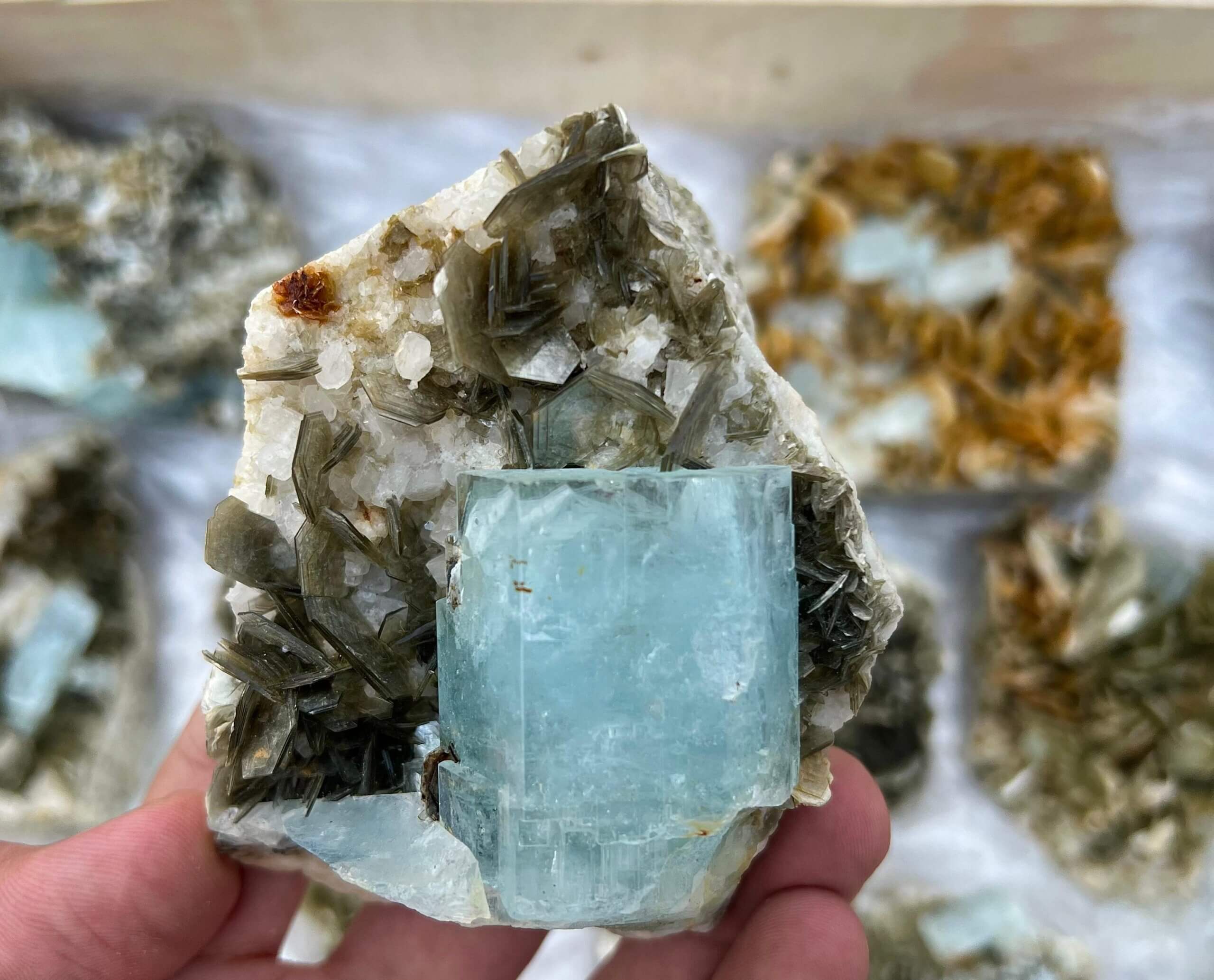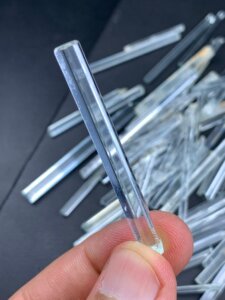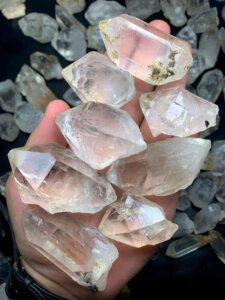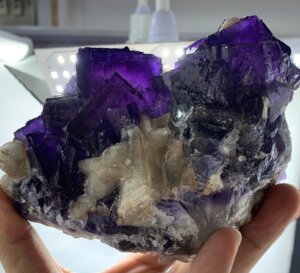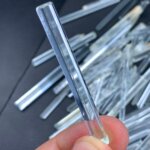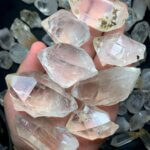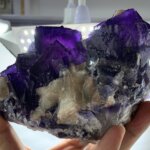Few gemstones capture the serene beauty of the sea quite like aquamarine. With its cool blue-green hues and crystalline clarity, this gem has enchanted collectors, jewelers, and crystal enthusiasts for centuries. Whether displayed in a mineral cabinet or set in fine jewelry, an aquamarine fine specimen stands as a symbol of elegance, tranquility, and timeless beauty.
In this article, we’ll dive deep into everything you need to know about aquamarine specimens — from their origins and formation to how to identify, care for, and purchase top-quality pieces.
What Is an Aquamarine Fine Specimen?
An aquamarine fine specimen is a high-grade, naturally occurring crystal or cluster of aquamarine (a variety of the mineral beryl). Unlike standard gemstones cut for jewelry, fine specimens are prized for their natural form, clarity, and aesthetic perfection as mineral displays.
Key Characteristics:
- Color: Ranges from pale sky blue to deep sea-blue with occasional green undertones.
- Transparency: High transparency with minimal inclusions increases value.
- Crystal Habit: Typically prismatic hexagonal crystals, sometimes terminated with flat or pyramidal ends.
- Associated Minerals: Often found with mica, feldspar, or quartz in pegmatite formations.
Collectors seek aquamarine specimens that showcase intense color saturation, well-defined crystal shapes, and pristine luster — qualities that make them museum-grade pieces.
The Geology and Formation of Aquamarine
Aquamarine belongs to the beryl family, which also includes emerald and morganite. Its blue hue comes from trace amounts of iron within the crystal lattice.
Formation Process:
- Pegmatite Crystallization: Aquamarine forms deep within Earth’s crust in granite pegmatites as molten magma cools slowly.
- Iron Inclusion: Iron ions (Fe²⁺ and Fe³⁺) replace aluminum in the beryl structure, giving the gemstone its characteristic blue tones.
- Natural Growth: Over millions of years, large and transparent crystals form, often alongside quartz and feldspar.
Major Sources of Fine Aquamarine Specimens:
- Brazil (Minas Gerais): Renowned for deep blue “Santa Maria” aquamarines.
- Pakistan & Afghanistan: Produce exquisite transparent crystals with greenish-blue hues.
- Nigeria & Mozambique: Known for clean, vibrant blue stones ideal for collectors.
- Madagascar & USA (Colorado): Yield unique, naturally terminated specimens.
Each locality contributes distinct characteristics, making aquamarine specimens globally diverse and fascinating for collectors.
The History and Symbolism of Aquamarine
The name aquamarine derives from Latin — aqua marina, meaning “water of the sea.” Ancient sailors carried aquamarine as a talisman for safe voyages, believing it calmed waves and ensured protection at sea.
Cultural Significance:
- Romans: Considered it the “gem of Neptune,” god of the ocean.
- Middle Ages: Believed to rekindle love and happiness in marriage.
- Modern Times: Symbolizes tranquility, courage, and communication.
As the birthstone for March, aquamarine is cherished for its symbolism of renewal, peace, and emotional clarity — making it equally appealing to spiritual healers and jewelry enthusiasts alike.
Identifying a Fine Aquamarine Specimen
When evaluating an aquamarine fine specimen, collectors focus on several key aspects that determine its quality and value.
1. Color Quality
- Premium: Deep, saturated blue tones — often termed “Santa Maria” color.
- Medium: Sky blue with soft green undertones.
- Lower Grade: Very pale or uneven coloration.
Tip: Natural aquamarines rarely exhibit overly dark tones. A gentle, oceanic hue often indicates authenticity.
2. Transparency & Clarity
Fine specimens are often eye-clean, free from visible inclusions or fractures. Transparent crystals with internal brilliance are the most desirable.
3. Crystal Formation
Prismatic, well-terminated crystals with natural luster are preferred by collectors. Crystals with undamaged edges and good symmetry command higher prices.
4. Size and Aesthetic Appeal
Larger specimens with balanced proportions and vivid color zoning are rare. Collectors also value specimens that feature a combination of aquamarine with other minerals, such as mica or tourmaline, forming beautiful natural clusters.
Aquamarine vs. Other Beryl Varieties
| Variety | Color | Trace Element | Notable Feature |
|---|---|---|---|
| Aquamarine | Blue to green-blue | Iron | Transparent, ocean-like tones |
| Emerald | Green | Chromium, Vanadium | Deep green with inclusions |
| Morganite | Pink to peach | Manganese | Warm pastel shades |
| Heliodor | Yellow | Iron (different oxidation) | Golden brilliance |
Among beryls, aquamarine stands out for its clarity and durability, making it both a collector’s and jeweler’s favorite.
How to Buy an Aquamarine Fine Specimen (Collector’s Guide)
Purchasing an aquamarine specimen requires more than just an eye for beauty — it’s about understanding quality, authenticity, and market trends.
1. Choose a Trusted Seller
Look for established gemstone dealers or specimen specialists with verifiable reputations, clear provenance, and professional photography. Reputable online platforms and websites (like Luminex Specimen) often provide certificates or origin details.
2. Evaluate Natural vs. Treated Stones
While many aquamarines undergo heat treatment to enhance color, fine natural specimens are often left untreated. Ask the seller whether the specimen is natural color or heat-enhanced — this can affect its value.
3. Inspect Photos and Videos
High-resolution images showing different angles, close-ups, and natural lighting help assess:
- Crystal termination
- Clarity and internal inclusions
- Matrix attachment (if any)
4. Compare Pricing
Fine aquamarine specimens range from $100 to several thousand dollars, depending on size, locality, and clarity. Museum-grade specimens or those from rare localities (like Pakistan’s Skardu region) can command premium prices.
5. Verify Authenticity
Request:
- Origin Certificate (if available)
- Testing Report from a recognized gemological lab
- Seller Guarantee for natural authenticity
Caring for Your Aquamarine Specimen
Proper care ensures your specimen retains its beauty for years to come.
Storage Tips:
- Keep aquamarine away from direct sunlight, which can fade color over time.
- Store separately in a soft cloth or padded box to prevent scratches.
- Avoid contact with acids, perfumes, or harsh cleaning agents.
Cleaning Tips:
- Use lukewarm water with mild soap.
- Gently clean with a soft brush; never use ultrasonic cleaners.
- Dry with a lint-free cloth and air-dry completely before storing.
For display pieces, regular dusting with a soft brush helps maintain brilliance.
Why Collectors Love Aquamarine Fine Specimens
Beyond their sheer beauty, aquamarine specimens carry unique appeal among collectors:
- Visual Harmony: Their serene color palette enhances any mineral collection.
- Durability: With a Mohs hardness of 7.5–8, they are remarkably resilient.
- Symbolism: Represent calmness, honesty, and confidence.
- Investment Value: Rare, large, or locality-specific specimens appreciate in value over time.
Collectors often say that aquamarine specimens “bring the ocean indoors” — a perfect blend of science, nature, and art.
Top Localities for Collectors to Explore
1. Minas Gerais, Brazil
Home to the world’s finest deep-blue aquamarines, especially from the Santa Maria de Itabira mine.
2. Shigar & Skardu, Pakistan
Famous for transparent, sharply terminated crystals often associated with muscovite or feldspar.
3. Erongo Mountains, Namibia
Yields lustrous sky-blue aquamarines, sometimes on smoky quartz matrices.
4. Colorado, USA
Mount Antero and Mount White produce stunning light-blue crystals highly valued by American collectors.
Frequently Asked Questions (FAQs)
1. Is aquamarine a rare gemstone?
While gem-quality aquamarine is relatively available, fine natural specimens with rich color and perfect terminations are rare and increasingly sought after by collectors.
2. How can I tell if my aquamarine specimen is real?
Real aquamarine feels cool to the touch, has high transparency, and often shows hexagonal crystal shapes. A gemological test can confirm authenticity.
3. Does aquamarine lose its color over time?
Prolonged exposure to sunlight or heat can fade aquamarine’s blue color. Always store specimens away from direct light.
4. What makes “Santa Maria” aquamarine special?
It refers to a specific deep blue hue originally found in Brazil’s Santa Maria de Itabira mine — now a term for top-grade aquamarine color globally.
5. Are aquamarine specimens a good investment?
Yes. Fine aquamarines, especially from rare localities or with outstanding clarity and color, tend to appreciate in value as natural resources become limited.
Conclusion: Discover the Ocean’s Gem
An aquamarine fine specimen is more than just a mineral — it’s a piece of Earth’s artistry. Its tranquil hues, flawless structure, and timeless symbolism make it a centerpiece in any collection. Whether you’re a seasoned collector or a first-time buyer, owning an aquamarine specimen connects you to the calm spirit of the sea and the wonder of geological creation.
Explore our curated selection of natural aquamarine specimens at Luminex Specimen — where authenticity meets beauty, and every crystal tells a story of nature’s finest craftsmanship.
